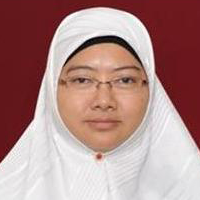Judge Rules in Favor of ex-Stanford Student Stranded on No-Fly List for 9 Years
 Rahinah Ibrahim (photo: Universiti Putra Malaysia)
Rahinah Ibrahim (photo: Universiti Putra Malaysia)
For the first time, a federal judge has ruled that the government must make a correction in the application of its no-fly anti-terrorism policy, and take a former Stanford grad student off the list she was mistakenly put on nine years ago.
U.S. District Judge William Alsup made his ruling Tuesday in San Francisco (there was no jury) but issued just a short statement that the government should clear 48-year-old Malaysian architecture Professor Rahinah Ibrahim. He is giving a higher court time to consider an appeal before releasing the text of his official ruling in April.
The government argued that it can’t be compelled to discuss the no-fly list in open court and, as it has consistently done in other cases, threw up numerous barriers to Ibrahim’s receiving her day in court. But the government did discuss particulars of the case with the judge in chambers and he said in his ruling the U.S. conceded that Ibrahim was not a threat to national security.
Ibrahim, a Muslim, was banned in 2005 when she attempted to fly with her daughter from San Francisco International Airport to her native country, Malaysia, where she was to present her doctoral research at a Stanford-sponsored conference. The authorities told her she was on the no-fly list, handcuffed her and put her in a holding cell for hours. She was in a wheelchair after a recent hysterectomy.
Ibrahim was finally sent to her Bay Area home and told she could fly the next day, which she did. But then the government refused to let her back in or give her an explanation why she was banned. Ibrahim filed a lawsuit and suggested that her inclusion on the list was a mistake.
The professor said an FBI agent visited her at Stanford in 2004 and asked what she knew of a militant Islamic group in Malaysia called Jemaah Islamiyah. Ibrahim said she knew nothing. Four months later, a consular official asked her about a group she did belong to, Jamaah Islah Malaysia, before denying her a visa. That group is made up of Malaysian professionals who have studied abroad and are interested in job creation. Ibrahim called them “progressive Muslims.”
When government lawyers deigned to discuss the case at all, they argued that Ibrahim was not particularly harmed by a U.S. no-fly ban because she could fly elsewhere in the world. They also argued that she had no intrinsic right to come to the U.S., lacking citizenship and other connections.
Ibrahim noted her Stanford connection, the husband she met in the U.S. and the daughter who was born here. She argues that the ban does indeed impair her ability to fly and makes the case that being on a no-fly list and branded a national security threat is bad for appearances, professional and social.
The government has steadfastly refused, since the no-fly list was conjured up after the September 11, 2001, attacks, to say who is on the list, how they got there or how they can get off it.
–Ken Broder
To Learn More:
No-Fly List Takes Legal Hit: Judge Rules U.S. Government Wrongly Labeled Woman a Terrorist (by Howard Mintz, San Jose Mercury News)
Malaysian Wins Removal of Name from “No Fly” List (by Paul Elias, Associated Press)
Judge: U.S. Erred in Putting Stanford Grad Student on “No-Fly” List (by Bob Egelko, San Francisco Chronicle)
Stanford-Educated No-Fly Victim Gets Rare Trial, but She Can’t Attend (by Ken Broder, AllGov California)
- Top Stories
- Controversies
- Where is the Money Going?
- California and the Nation
- Appointments and Resignations
- Unusual News
- Latest News
- California Forbids U.S. Immigration Agents from Pretending to be Police
- California Lawmakers Urged to Strip “Self-Dealing” Tax Board of Its Duties
- Big Oil’s Grip on California
- Santa Cruz Police See Homeland Security Betrayal in Use of Gang Roundup as Cover for Immigration Raid
- Oil Companies Face Deadline to Stop Polluting California Groundwater





